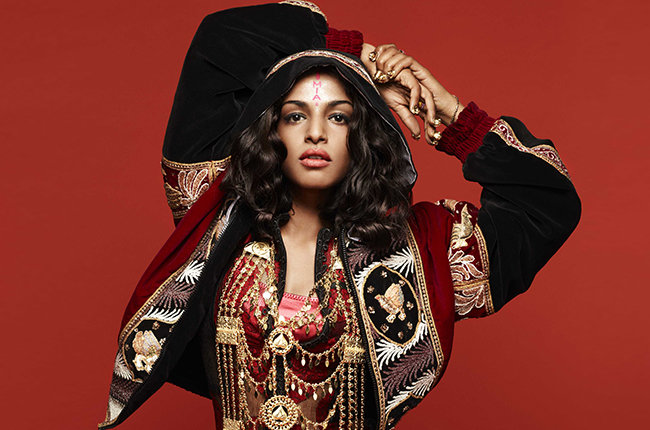Matangi/Maya/M.I.A (2018) is not your typical musician’s biographical documentary. For one, most of the film’s footage is shot by Maya herself – beginning with home videos of her childhood of her family’s arrival in the UK as refugees and evolving to become more introspective and self-aware during her university days studying fashion and film in London. Also documented is her neurotic tour with Elastica, followed by the sudden boom in her music career. This is intercepted by trips to Sri Lanka and America, and the development of her family life. The camera gains more distance as the film progresses, and as Maya finds more fame and success, but Matangi/Maya/M.I.A is fundamentally an intensely personal account of her transformation into a global music artist, and to the voice against Sri Lankan conflict and the subjugation of Western media that gave her a well-earned place on TIME magazine’s list of 100 Most Influential People.
However, much like the film’s depiction of M.I.A’s relationship with the media, this film isn’t without problematics. This isn’t a documentary about M.I.A’s life in the standard tradition of biography, but with a more specific focus towards her political activism, engagement with pop culture and struggle to represent national identity. Although, featured in nearly every shot of the film, she remains the authoritative voice throughout. However, at points the film allows this focus to become too central and can slide into over subjectivity. An example of this is the depiction of the ‘Superbowl incident’ in 2012, where during her performance with Madonna M.I.A flips the middle finger to the camera, and to millions of viewers. Maya sneaks away from the pursuing representatives of NFL and labels her action a ‘spiritual gesture’, however this serves to expose the film’s lack of neutral perspective – something that weakens the depth of the narrative slightly.
That being said, by far the most compelling part of the film is Maya’s extensive self-archive. This footage grounds the film so powerfully, yet strangely Maya isn’t credited in its production. She handed the footage over to Loveridge in 2008 who spent ten years piecing together the film, which in a way helps with its most obvious difficulties in achieving a developed voice. Loveridge takes license at times to somewhat criticise Maya’s political decisions and especially her understanding of Sri Lankan conflict, as she takes a hard stance on these issues without much knowledge and limited experience. The film explores how as the only Tamil Sri Lankan in pop Western culture, Maya struggles with the weight of representing her national identity within the censorship of media and dealing with disagreement and backlash from the British Sri Lankan community.
The quality of footage used could definitely be criticised for being ‘low-grade’ and lacking in visual clarity, (especially obvious in a cinema screening), but it also succeeds in creating a dynamic aesthetic, something which many documentaries struggle to do. Maya’s distinctive sense of style, fashion, her artwork kind of expand outward into the composition and editing, and Loveridge really pays homage to her visual artistry, although Maya herself has critiqued the film for failing to adequately spotlight her music. Perhaps In its polarisation Loveridge’s documentary captures the essence of M.I.A’s pop culture rebellion and her refusal to be silenced.
Despite it’s controversies, the reason this film remains important is for what it represents. In 2018, amongst national and global debates around migrant movement, this film stands out as a statement of power – Matangi, the Sri Lankan refugee, Maya the British student rebel and M.I.A the global artist are stigmatised images in Western culture that combine here to form an unlikely but radical identity. In its electrifying celebration of personal vindication, Matangi/Maya/M.I.A presents a narrative that challenges and pushes not only the formal boundaries of biographical documentary, but also societal expectations surrounding migrants. This film excels in highlighting the severely under-reported conflict in Sri Lanka, and critiques anti-refugee sentiment by celebrating unique artistry, cultural respect in success, and unified but complex identity.

